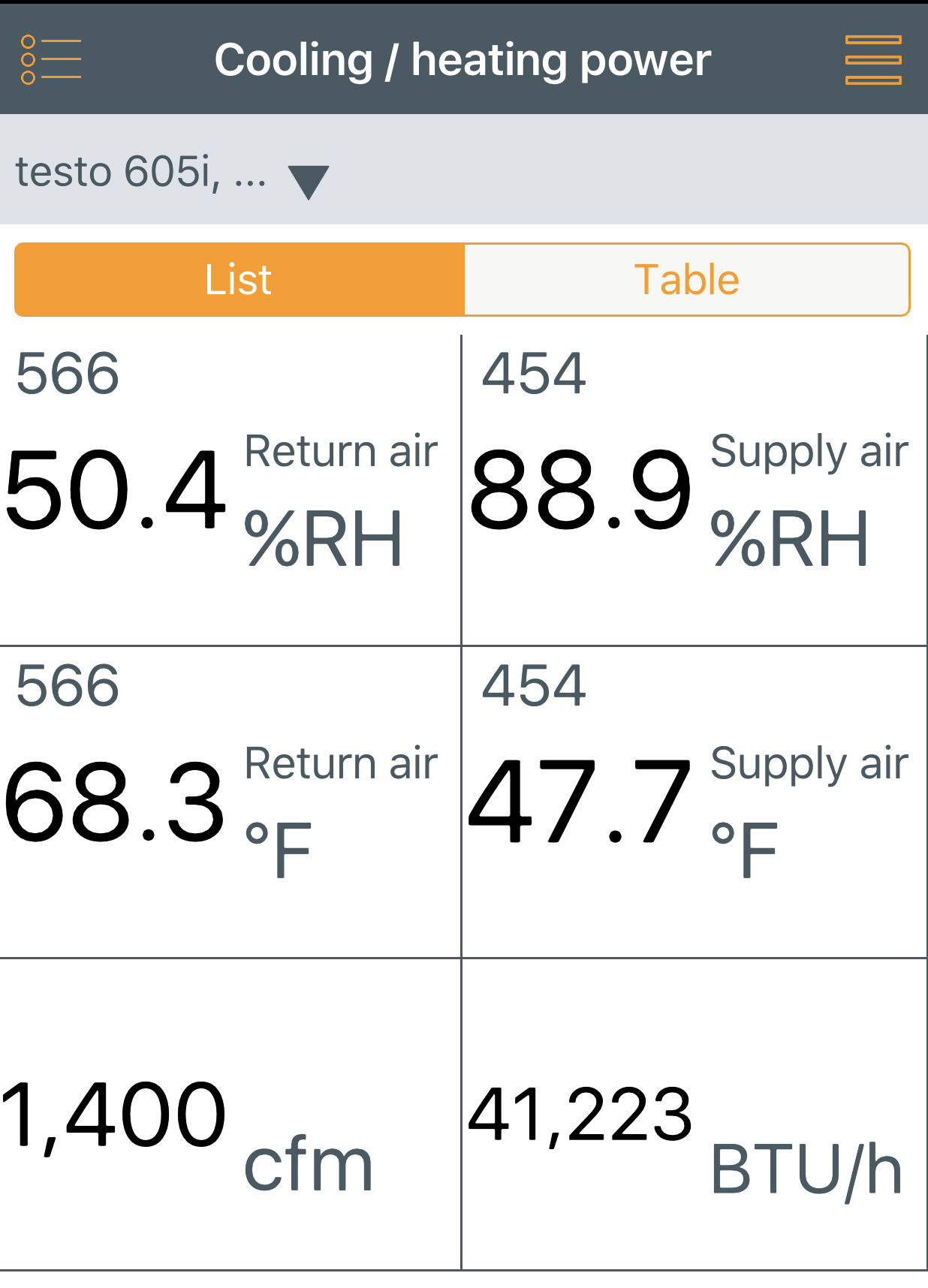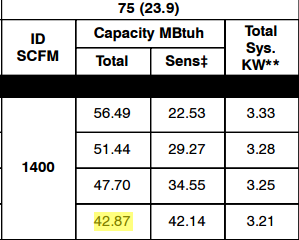Get Tech Tips
Subscribe to free tech tips.
Cooling Capacity Isn’t Always What it Seems

We all learned how to read the tonnage off of a model number within a few weeks of beginning in the trade. What you may (or may not) have learned is that just because something has an 036 in the model number, that does NOT mean it actually produces 36,000 BTU/hr. It doesn't reach the expected cooling capacity even during RATED conditions, let alone real-world conditions.
Some of you may be used to pulling up an AHRI rating to find the true capacity of a system match. That's a good place to start; you will often find out that the system produces anywhere from slightly less to 4,000 BTU/hr less than the nominal rating. Here are the AHRI ratings for the system I have in my home:
 You will notice that the 2-ton matches actually produce 24,000 BTU/hr at the rated conditions. Those conditions are REALLY WARM temps inside and out, by the way. However, the 4-ton match produces 46,000 BTU/hr under the same conditions.
You will notice that the 2-ton matches actually produce 24,000 BTU/hr at the rated conditions. Those conditions are REALLY WARM temps inside and out, by the way. However, the 4-ton match produces 46,000 BTU/hr under the same conditions.
Here are some real-world capacity readings I took on my Carrier VNA8 4-ton system with the Testo Smart Probes App and two 605i thermo-hygrometers:

That is for a 4-ton unit with a proper charge (right at 11.6 subcool, as the Infinity stat calls for), a 0.45 TESP, and 30 minutes of high-stage runtime. You might be tempted to think that something is wrong with the measurement or the unit, but we need to look closer.

You will notice pretty quickly that my indoor temperature is low (68.3 dry-bulb) with a low indoor RH (54%). That equates to a 57-degree wet-bulb indoor return.
Also, the outdoor temperature is only 72 degrees DB. In order to tell if 41,000 BTU/hr is within range or not, we will need to look in detail at the manufacturer's expanded performance data located in the product data.

Here is the expanded data for this particular match, and we lucked out. My air handler, condenser, and suction line size are the match that the rating is based on. In some cases, you will need to use a multiplier based on an alternate match or smaller copper sizes; those can further reduce the rated capacity and possibly the efficiency, like in the FE4ANF003 or 002 below.

Now, let's zoom in on the performance data that applies to our actual conditions and see how we did.

The highlighted figure is the closest this chart comes to our actual conditions, though our indoor dry-bulb temperature is actually significantly lower than the 75-degree DB on the chart. So, now the real-world 41,223 BTU/hr actually stacks up pretty well with the 42,870 BTU/hr on the chart.
All of this is to say that when sizing equipment and testing cooling capacity, there is a LOT more to it than just the nominal tonnage in the model number. The only real way to know is to dig into the manufacturer's product data and really understand that piece of equipment.
—Bryan
P.S. – If you want to learn more about capacity as it relates to airflow and sizing (Manual S), check out Ed Janowiak's 2021 HVACR Training Symposium presentation HERE.











Comments
Manufacturer’s specs work great but when not readily available a refrigerant properties table can do the trick too.
For a given ambient temperature, a higher suction saturation temperature (as in a higher suction pressure as the result of a warmer space) will correspond to a higher vapor refrigerant density. As such, the compressor will effectively displace a higher refrigerant weight for a given CFM (of refrigerant). Under a high enthalpy return air, a 3 ton unit will actually deliver a well over 40K btuh capacity.
As the equipment runs and the space cools down to the near rated conditions, the SST drops and so does the refrigerant vapor density. A capacity calculation then will yield one closer to the ahri rating.
This is a very good post that touches on a subject that a lot of us field techs choose to dismiss because it comes across as counter intuitive.
Manufacturer’s specs work great but when not readily available a refrigerant properties table can do the trick too.
For a given ambient temperature, a higher suction saturation temperature (as in a higher suction pressure as the result of a warmer space) will correspond to a higher vapor refrigerant density. As such, the compressor will effectively displace a higher refrigerant weight for a given CFM (of refrigerant). Under a high enthalpy return air, a 3 ton unit will actually deliver a well over 40K btuh capacity.
As the equipment runs and the space cools down to the near rated conditions, the SST drops and so does the refrigerant vapor density. A capacity calculation then will yield one closer to the ahri rating.
This is a very good post that touches on a subject that a lot of us field techs choose to dismiss because it comes across as counter intuitive.
To leave a comment, you need to log in.
Log In